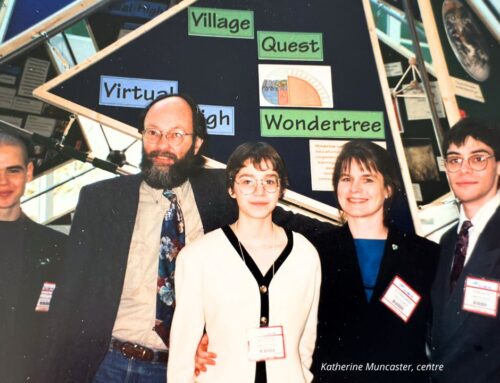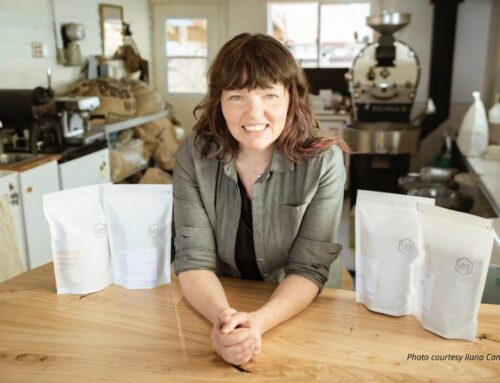Families sometimes turn to home learning only when they run out of other options, and they often start at SelfDesign after months or years of struggle. It is especially challenging for the parents of special needs children, who may also be navigating complex medical and educational needs.
Alexandra, the parent of an autistic learner who is enrolled in Grade 10 with SelfDesign Learning Community, shares how their family’s approach to learning and development has changed over the course of their experience, thanks to the support they received from SelfDesign’s experienced educators, support services, and learner-centred approach to learning.
Here is Alexandra’s story.
When we enrolled our son at SelfDesign three and a half years ago, we were exhausted and desperate. Our son had attended three different brick-and-mortar elementary schools, but none of them were able to handle his combination of giftedness, sensitivity and anxiety. He spent most of his school years in resource rooms or fleeing from the classroom, and had only negative associations with school.
Luckily, SelfDesign matched us with Tami, a learning consultant who understood the complexities of our son and our situation. Tami supported us in focusing on our son’s developmental, emotional and behavioural growth. She understood the challenges, such as how hard it is to pursue traditional academic work when the sight of a math workbook takes you back to your terror of the classroom.
Following our son’s interests and rhythms helped him make slow and steady progress.
We saw his anxiety diminish, and he became a little more flexible and resilient. He’s such a sponge for learning that even though we rarely cracked a textbook, he repeatedly astonished us with his math skills or his knowledge about the Civil Rights movement or the life story of Marie Curie.
Then COVID hit, and all that hard-won progress froze… and then rolled backwards. Our son refused to risk exposure by leaving the house, and after a couple of months where he seemed just fine in his new cozy cocoon, we started to see the physical and mental health impact of extreme isolation. By the end of 2020, he was deeply depressed, anxious and volatile. We spent the next six months in a state of crisis, with daily conflicts, total school refusal and just about every kind of emotional and behavioural disruption you can imagine.
In consultation with our son’s extended care team, we gradually developed a game plan designed to get him unstuck and out of crisis. That included hiring a support worker who suggested a framework for introducing new expectations for our son – using the structure of a role-playing game to “level up” a few expectations and privileges at a time, every week or two.
We started simply, with things like “speak respectfully” and “throw out your own garbage”, and then gradually built up expectations like “leave the house at least three times a week”. Privileges like treats and screen time would be attached to meeting these expectations.
After 18 months of low-expectation pandemic living, this was a big change, so we expected a very turbulent fall, which would complicate the transition to the more structured academic expectations of Grade 10. We let our son’s learning consultant and other educators know that we just didn’t know how much schoolwork we could expect our son to tackle when we had such an ambitious agenda for addressing his emotional and behavioural challenges.
Sure enough, we had a big showdown the very first week of the school year, when our son refused to do any work — until the weekend rolled around, and he discovered that he wasn’t getting his usual screen time until his work was complete. To avoid yet another argument, I just handed him a print-out of the challenge steps he needed to complete, with a note that screens would be available once the work was done.
To my great surprise, he dove right in. That was a turning point. We got into the rhythm of creating a daily print-out with a chunk of challenge work, and giving it to our son each morning.
 Once we realized that it was not a question of whether he’d do schoolwork at all, but rather, how much and at what level, all kinds of possibilities opened up. Tami worked with us to figure out how we could adapt assignments to gradually build up his skills and capacity, and over the course of the term, we increased the scope of work in each week’s print-outs. By December, he was doing big chunks of “Discover”, “Personalize” or personal project work each week, and our son had rediscovered his particular love of math and programming.
Once we realized that it was not a question of whether he’d do schoolwork at all, but rather, how much and at what level, all kinds of possibilities opened up. Tami worked with us to figure out how we could adapt assignments to gradually build up his skills and capacity, and over the course of the term, we increased the scope of work in each week’s print-outs. By December, he was doing big chunks of “Discover”, “Personalize” or personal project work each week, and our son had rediscovered his particular love of math and programming.
As our son settled into the rhythm of daily schoolwork, everything started to shift. He was calmer and happier when he’d spent an hour wrestling with some math problems and using his mind. He was less anxious when he knew what the expectations would be each day and how his day would unfold around the structure of his daily math, challenge and project work.
Most importantly, he was noticeably happier. After years of feeling lousy about himself because of the turbulence of his school years, he felt so proud of being able to do schoolwork, just like any other kid.
Weekends could still be tricky. By Sunday night, he was often listless and blue.
“Why do you think weekdays go better?” my husband asked him one Sunday.
“I think my schoolwork gives me a sense of purpose,” our son said.
We had expected that SelfDesign schoolwork would be an obstacle to our new game plan — something we would tackle only if it didn’t get in the way of our developmental and behavioural goals. Instead, school turned out to be the engine of our son’s transformation and growth.
He is calm and happy, with a growing sense of confidence and competence. For the first time in a decade, we’re out of crisis and seeing our son surprise us with newfound flexibility, responsibility and belief in his own potential.
I can’t imagine how we could have achieved this sort of turnaround without SelfDesign. If our son were still in a brick-and-mortar school, he would still be overwhelmed with anxiety and sensory overload and as stuck as ever. If he were in a more structured or conventional distance learning program, without the opportunity to adapt the curriculum to his abilities and interests, he would be frustrated and bored. If we were doing total unschooling or DIY home learning, we would not have had any idea of how to engage or challenge his mind — and that is exactly what has unlocked this growth.
I was a reluctant homeschooler, but now that I see what’s possible for our son, my only regret is that we didn’t start with SelfDesign at the very beginning of his education. It’s such a pleasure to support his growth and learning, and we’re so grateful to the SelfDesign team that has made it possible.
If you were a SelfDesign parent and would like to share your family’s SelfDesign story, please email us at communications@selfdesign.org
Read more about how SelfDesign supports learning in challenging times
Learn about how we support learners and families who have learning difficulties







